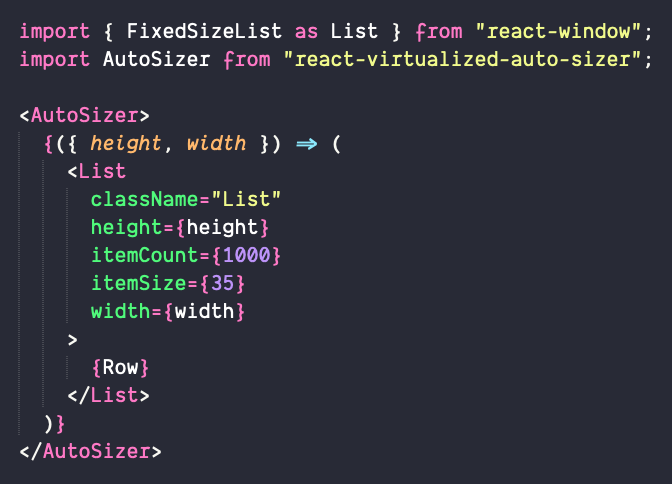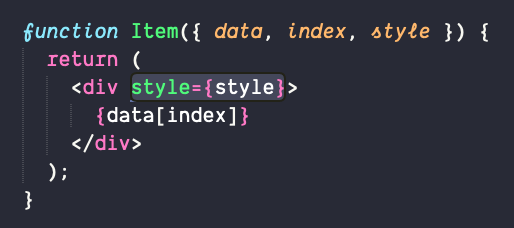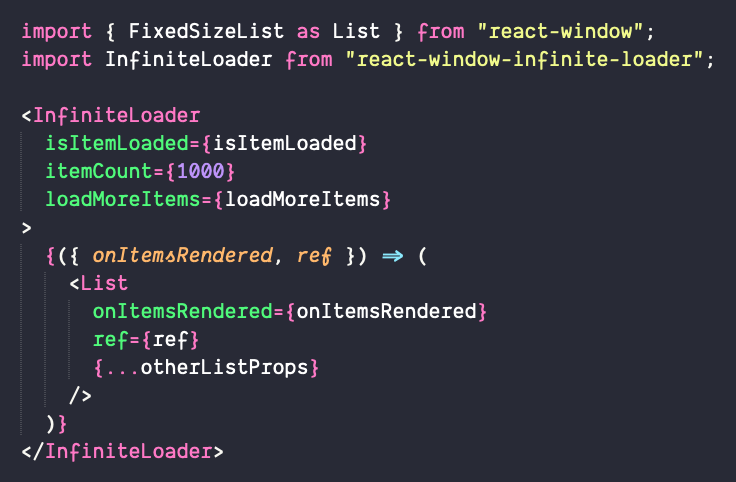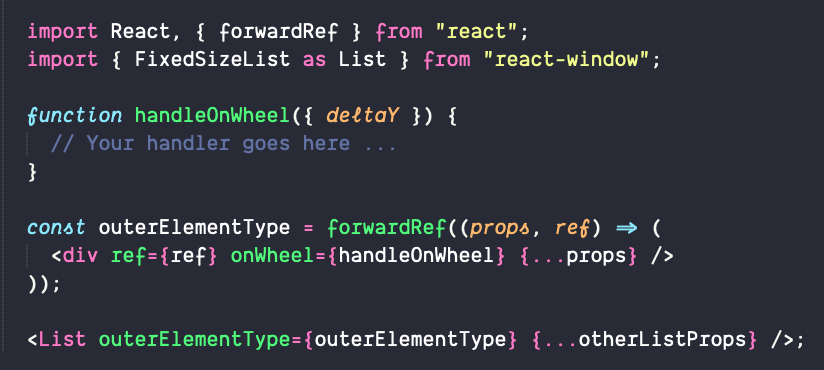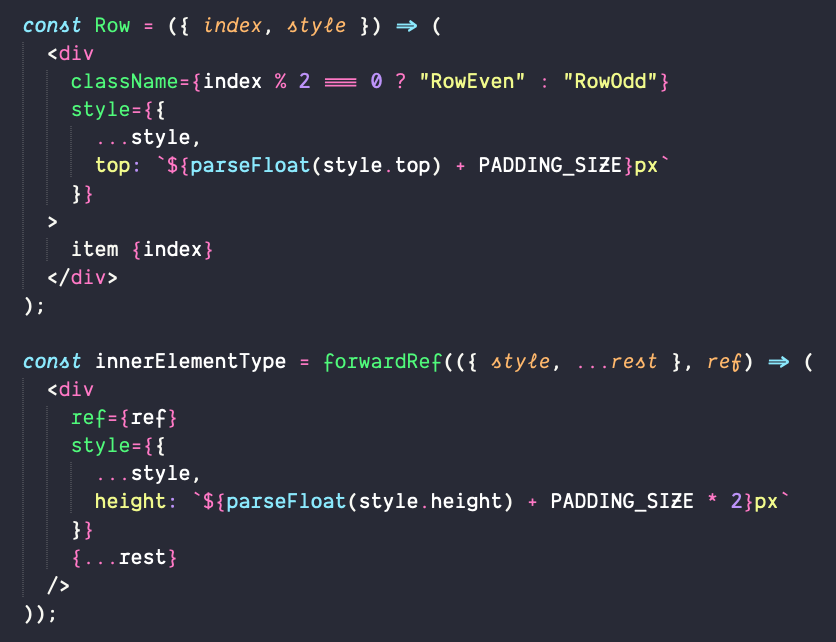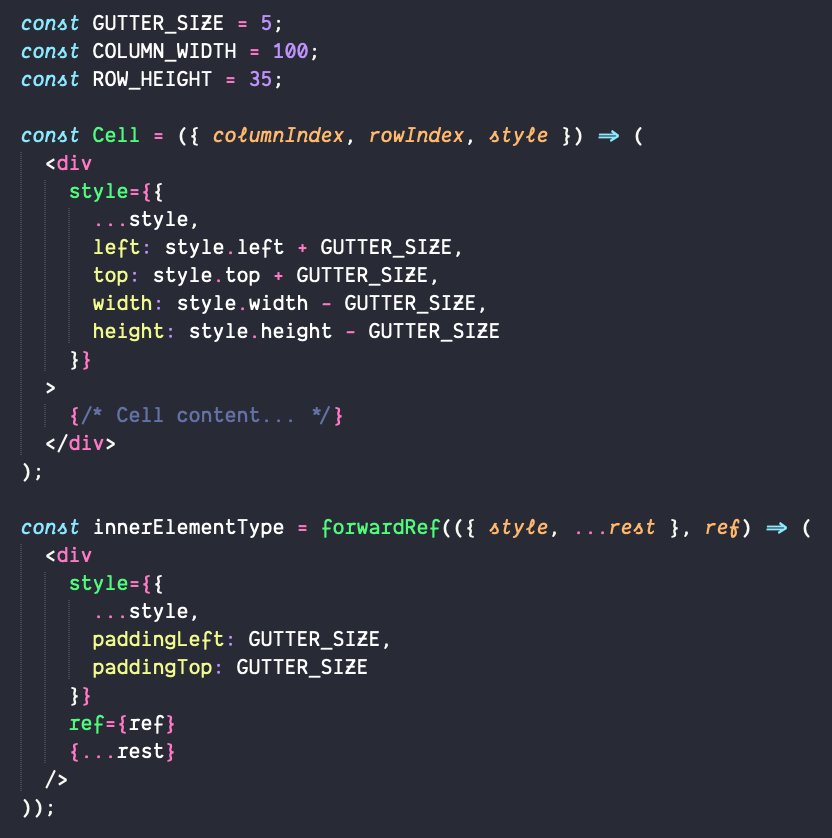Performance Optimization
- react-window:
Similar to react-virtualized, react-window focuses on rendering only the visible items in a list or grid. It is designed to be lightweight and efficient, making it a great choice for applications that need to maintain high performance with large datasets.
- react-virtualized:
With a variety of optimization techniques, react-virtualized can handle large datasets efficiently. It includes features like windowing and lazy loading, which ensure that only the necessary items are rendered, significantly enhancing performance for complex UIs.
- react-infinite-scroll-component:
This package focuses on loading more data as the user scrolls, minimizing the initial load time and improving perceived performance. It handles loading states efficiently, ensuring a smooth user experience without overwhelming the DOM.
- react-virtual:
react-virtual optimizes rendering by only creating DOM nodes for items that are currently visible in the viewport. This leads to significant performance improvements, especially with very large lists, as it reduces the number of elements in the DOM.
- virtua:
virtua offers advanced performance optimizations, allowing developers to customize the rendering behavior and performance characteristics. It is designed for applications that require a high degree of control over how items are rendered and updated.
Ease of Use
- react-window:
react-window is designed to be user-friendly, with a clean API that simplifies the process of implementing virtualization. It strikes a balance between performance and ease of use, making it accessible for most developers.
- react-virtualized:
While powerful, react-virtualized has a steeper learning curve due to its extensive features. Developers may need to invest more time to fully utilize its capabilities, especially for complex use cases.
- react-infinite-scroll-component:
This package is straightforward to implement, requiring minimal setup. It provides a simple API that allows developers to quickly add infinite scrolling to their components without extensive configuration.
- react-virtual:
react-virtual has a simple API that makes it easy to integrate into existing applications. Its minimalistic approach allows developers to get started quickly without a steep learning curve.
- virtua:
virtua provides a flexible API that allows for customization, but it may require a deeper understanding of virtualization concepts. It is best suited for developers who need specific optimizations and are comfortable with more complex configurations.
Feature Set
- react-window:
react-window provides essential virtualization features with a focus on simplicity. It supports fixed and variable item sizes, making it versatile for various use cases while maintaining a lightweight footprint.
- react-virtualized:
react-virtualized includes a rich set of features such as support for variable row heights, cell rendering, and dynamic loading of data. It is ideal for applications that require comprehensive virtualization capabilities.
- react-infinite-scroll-component:
This library primarily focuses on infinite scrolling, providing essential features like loading indicators and threshold settings for triggering new data loads. It is ideal for applications that need basic infinite scroll functionality without additional overhead.
- react-virtual:
react-virtual offers a minimal feature set focused on virtualization, making it lightweight and efficient. It is suitable for applications that require basic virtualization without the need for advanced features.
- virtua:
virtua offers a customizable feature set that allows developers to fine-tune the virtualization experience. It is best for applications that require specific performance optimizations and flexibility in rendering.
Community and Support
- react-window:
react-window benefits from a supportive community and clear documentation, making it accessible for developers. Its popularity is increasing, ensuring ongoing support and updates.
- react-virtualized:
With a larger user base and extensive documentation, react-virtualized has strong community support. Many resources and examples are available, making it easier for developers to troubleshoot and implement advanced features.
- react-infinite-scroll-component:
This package has a growing community and is well-documented, making it easy for developers to find support and resources. It is actively maintained, ensuring compatibility with the latest React versions.
- react-virtual:
react-virtual is relatively new but has gained traction for its simplicity and performance. The community is growing, and documentation is clear, helping developers implement it effectively.
- virtua:
virtua is less widely adopted compared to others, but it offers good documentation and support for developers willing to explore its features. Community engagement is growing, which may lead to more resources in the future.
Customization
- react-window:
react-window strikes a balance between customization and simplicity, allowing developers to adjust item sizes and rendering behavior without overwhelming complexity.
- react-virtualized:
react-virtualized provides extensive customization options, allowing developers to tailor the virtualization experience to their specific needs. It is ideal for complex applications that require detailed control over rendering.
- react-infinite-scroll-component:
This library offers limited customization options, focusing on ease of use. It is suitable for developers who need a quick solution without extensive customization requirements.
- react-virtual:
react-virtual allows for some customization but is primarily focused on performance. It is best for developers who want a straightforward solution with minimal configuration.
- virtua:
virtua excels in customization, enabling developers to define their own rendering logic and performance optimizations. It is best suited for applications that require a tailored approach to virtualization.
















